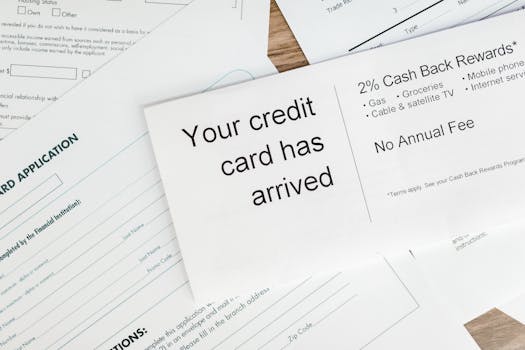Personal finance
Financial Habits That Build Long-Term Stability
Discover the key financial habits that build genuine long-term stability. Learn practical strategies, actionable steps, and real-world tips to turn your daily routine into a foundation for financial security.
Advertisement
Everyone wants a secure financial future, but knowing where to start can feel overwhelming. The journey begins not with big leaps, but with everyday choices. Developing strong financial habits is the foundation of lasting stability.
Money decisions ripple through every part of life, shaping opportunities and peace of mind. Without a solid strategy, even high earners may experience stress or uncertainty. Habits are more than routines—they’re the roots of consistent progress.
Small, purposeful financial habits add up. This article shares practical steps and relatable scenarios to help you create stability, one habit at a time. Ready to see what works for real people?
Building a Bulletproof Spending Plan That Holds Up Month After Month
Sticking to a spending plan is a critical financial habit for achieving stability. Map out your month so bills, savings, and fun all have a place—and surprises don’t throw you off course.
Start by listing fixed and variable expenses with your nonnegotiables first. When someone reviews their budget and thinks, “$200 on takeout? I had no idea,” there’s room to adjust priorities.
The Envelope Method for Hands-On Budget Management
Using physical or digital envelopes for each category makes limits visible. After groceries, put the receipt in its envelope. If you see it empty, it’s time to pause on further spending.
Ditching guesswork reduces anxiety. Envelopes create accountability and show exactly when you’ve reached the budget for eating out or entertainment—no more accidental overdrafts.
Try setting up envelopes with names like “food,” “gas,” and “fun money” right after payday. This hands-on approach strengthens discipline and makes financial habits stick naturally.
Segmenting Needs Versus Wants for Greater Clarity
Draw a line between expenses you need for living—housing, groceries, insurance—and those you want, like streaming services or luxury coffee. Labeling each line item cuts impulse buys.
Monthly reviews help clarify patterns. For example, noticing that “clothes shopping” crept into the “need” category when it’s really a “want” enables honest changes next month.
Choose language that fits your style; maybe call them “must-haves” and “like-to-haves.” This honest categorization supports financial habits that keep your priorities front and center.
| Budgeting Method | Best For | Required Tools | Takeaway |
|---|---|---|---|
| Envelope System | Hands-on learners | Envelopes or apps | See limits visually; ideal for spenders |
| Zero-Based Budget | Detail-oriented | Spreadsheet, calculator | Every dollar has a job; maximizes accountability |
| 50/30/20 Rule | Simplicity seekers | Calculator | Quick splits; easy habit for beginners |
| Automatic Payments | Busy schedules | Bank portal/app | Prevents missed bills; frees up mental space |
| Weekly Check-Ins | Collaborators | Calendar reminders | Spot overspending fast; strengthens teamwork |
Turning Consistent Saving Into a Nearly Automatic Reflex
Automatic transfers and habit-stacking make saving a seamless part of daily financial habits. When saving happens without extra decisions, progress keeps building even during hectic times.
Pair savings with habits you already do—like transferring $20 every payday while you check your email. Reliability destroys the myth that saving needs special effort or big sacrifices.
Automating Short- and Long-Term Savings
Automating means moving money straight to separate accounts: emergency funds, vacation, or retirement. Set up direct deposits or app-based transfers right after payday.
- Send 10% of each paycheck to savings before anything else; this ensures it remains a priority, no matter what bills come later.
- Create sub-savings for specific goals; name one account “car repair” if past repairs surprised you, so you’re ready next time.
- Split savings into timeframes, like “6-month emergency buffer” and “holiday gifts fund,” to make progress measurable.
- Increase automated savings by $1 per month; small bumps build serious momentum without feeling painful.
- Link new habits to routines, like “I save $5 right after paying a bill on my phone.” This locks habits into your regular workflow.
Having systems automatically transfer money lets you focus on living—not moving cash around. Minor setup work pays off as savings accumulate without much daily thought.
Recovery Steps When Unexpected Costs Hit
Use a “surprise expense log” to review and plan your recovery. List the expense, amount, and the first step to refill any savings you dipped into.
- Pause optional spending for one pay cycle; redirect the usual “fun” or “takeout” line items to rebuild your emergency fund.
- Check for unused subscriptions to cancel, and move that money to your recovery goal instead.
- Pick up an extra shift or freelance gig, but avoid transferring side income to regular spending. Route it straight to savings instead.
- Sell one gently used item online to help fill the gap quickly—it’s faster than waiting weeks for adjustments to add up.
- Ask “Do I want this more than stability?” before a new purchase. Saying it out loud clarifies priorities in the heat of a tempting decision.
The faster you take action, the less time your emergency fund stays empty, and the easier it is to bounce back after surprises.
Setting Up Bill-Paying Rituals You’ll Never Dread
Reliable bill management is a financial habit that blocks late fees and keeps your credit score healthy. Turn it into a ritual so payment days are predictable, not stressful.
Creating Non-Negotiable Bill-Pay Dates
Set a standing appointment to pay bills: the first Saturday morning and third Wednesday evening of each month, with reminders on your phone. Routine brings peace of mind by removing chance from missed payments.
Treat this date like an important meeting—no skipping, no multitasking. Making it a ritual means you know exactly when bills get handled, with zero last-minute panic.
Color-code a calendar or stick a visible note by your desk. These visual cues are a constant prompt, reinforcing your bill-management habits until they become reflexive.
Batching Digital Bill Payments to Save Mental Energy
Log in to all bill sites in one session and batch payments together. For instance: “Friday after dinner, I sit down and pay every bill due next week.” Efficiency prevents slow leaks.
This strategy reduces decision fatigue, especially when you combine it with autopay for fixed bills. For variable ones, calculate the average and set an alert if your usage hits a trigger point.
Batched routines give you back precious time and confidence. When each bill is crossed off, your financial habits run on rails—freeing your brain for bigger decisions.
Crafting Conscious Spending Rules for Daily Decisions
Clear spending rules eliminate ambiguity in tough moments. If you always pause before hitting “buy now,” your wallet benefits—and so does your future self. Make conscious spending a habit, not a gamble.
Adopting a 24-Hour Wait Rule for Nonessentials
Any nonessential purchase waits 24 hours. If you still want it, decide if it fits the budget. This rule stops impulse spending in its tracks and gives you space for reflection.
Say the rule out loud: “I’ll think about this for a day.” Step away from your phone or computer. Later, revisit the item with fresh eyes and your budget front of mind.
If the desire fades, you’ve protected your savings. If it remains, you can buy with confidence, knowing it’s a conscious decision aligned with strong financial habits.
Applying the “Hourly Wage Calculator” to Purchases
Calculate how many hours of work are needed for any fun purchase. This mental trick puts costs in perspective and discourages buying things that aren’t truly worth your time.
For example, if new shoes cost $90 and you earn $18 an hour, that’s five hours of effort. Saying, “Do I want to trade five hours of my life for these?” makes you think twice.
This analogical approach grounds abstract prices in the concrete reality of your labor, making every purchase more intentional.
Committing to Financial Habits for Lifelong Stability
Habits are the real secret weapon for long-term financial stability. Each small decision builds on the last, gradually cementing a healthy relationship with money that endures through every life stage and challenge.
Whether you automate savings transfers, schedule bill rituals, or pause on unnecessary purchases, the payoff shows in every stress-free month and each dollar saved for the future. Financial habits grow stronger with use, turning new choices into natural reflexes.
Take one new habit from this guide and make it part of your daily routine. Brick by brick, your foundation strengthens, securing a future where your financial life works—quietly, reliably, and on your terms.





